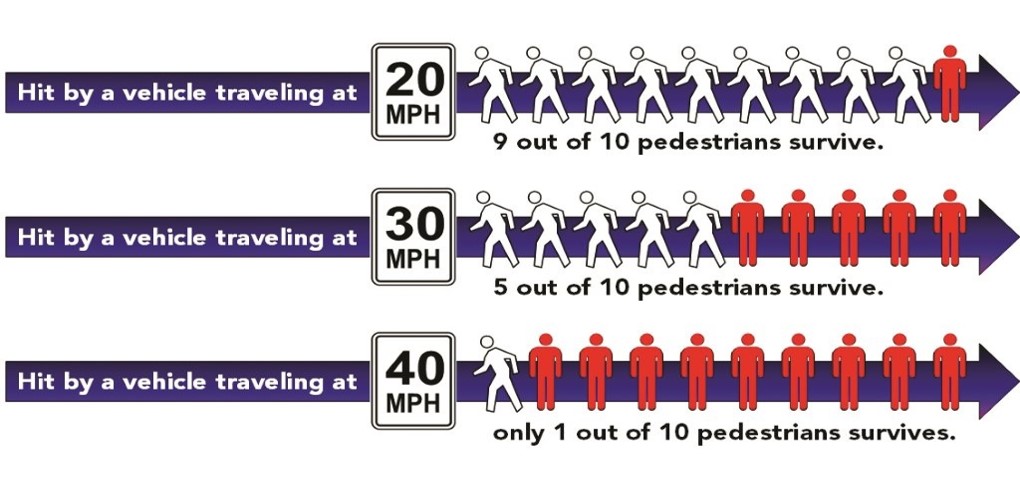Upstate Forever asks Greenville City Council to adopt “20 is Plenty”
July 30th, 2020
By Sherry Barrett
In an Upstate Forever blog post shared earlier this summer, I celebrated my recent move to a walkable neighborhood in the City of Greenville. I touted my neighborhood’s diverse mix of residents, amenities, and destinations within walking distance. I also noted that streets designed to make walking practical, safe, and convenient are essential for a walkable neighborhood.
Now, in anticipation of City Council considering updates to the city’s Traffic Calming Program in August, this is an ideal time to circle back, take a closer look at “streets” in a walkable neighborhood, and explore an opportunity for Greenville residents and City Council to support practical, safe, and convenient neighborhood living in the city.
First, what are neighborhood streets? And how are they different from other streets?
“Neighborhood streets are where communities are built... Places where people spend time, children play, and neighbors meet.” Other streets “provide access to local services while offering mobility choices that connect them to other parts of the city. Often vibrant and bustling with commercial activity, the primary corridors move significant volumes of people every day... Adjacent residential areas, however, generally have quieter streets that invite traffic to move at slower speeds.”
“Well-designed sidewalks, provision of cycle facilities, shade trees, and traffic calming measures ensure that people are invited to walk or cycle to local destinations through these neighborhood streets." (Source: Global Designing Cities Initiative)
What speed of travel is appropriate on our neighborhood residential streets? We think 20 is Plenty and here’s why.
Did you know that a pedestrian hit by a vehicle traveling at 30 mph has only a 50% chance of surviving? Meanwhile, a pedestrian hit by a vehicle traveling at 20 mph has a 90% chance of surviving.

(Source: Vision Zero Network)
Even small decreases in vehicle speed can dramatically reduce the risk of fatalities. Slowing vehicle traffic to 20 mph on neighborhood residential streets — now, rather than waiting for longer-term engineering and design-related traffic calming measures to be implemented over time — is a critical step toward improving neighborhood safety and livability for everyone.
People should be able to safely walk pets, play with children in their front yard, garden in the planting strip, and walk or bicycle on neighborhood streets with their children — whether for exercise, to visit nearby family, friends, or neighbors, or to access nearby amenities. Embracing 20 is Plenty will help make neighborhood residential streets in Greenville more practical, safe, and convenient – not just for pedestrians, but for all travelers.
That’s why Upstate Forever is asking members of Greenville City Council to include a 20 is Plenty messaging campaign and reduced speed limit of 20 mph on neighborhood residential streets in the city as part of revisions to the city's Traffic Calming Program anticipated in August.
If you live in, work in, or care about the future of the City of Greenville, click here for an email template you can customize to ask Greenville City Council members to add 20 is Plenty to the city's Traffic Calming Program: tinyurl.com/GVL20plenty

